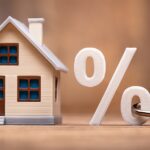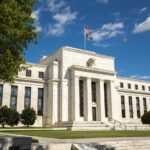You can read our full cover story in the November edition of MortgagePoint, but in this Q&A excerpt, First American’s Chief Economist Mark Fleming digs into the factors that will define the 2026 housing market. From slowly improving affordability and the fading—but persistent—rate lock-in effect to geographic price corrections, negative equity risk, and the limited but growing role of non-traditional homeownership models, Fleming offers a clear view of the forces most likely to shape the year ahead.
How do you expect affordability to evolve in 2026, and which factors (prices, rates, income) will drive most of the change?
Affordability will gradually continue to improve as mortgage rates decline modestly, and, more importantly, as household income growth outpaces slow house price appreciation, and even declining house prices in some markets.
You’ve written about why the housing market recovery may be “less reliant” on Fed rate cuts than many believe. Could you expand on that? What other dynamics are more important for 2026 than simply waiting for rate cuts?
Mortgage rates are not expected to fall nearly enough to meaningfully unlock the millions of homeowners currently rate-locked in. Life events, such as marriage, expanding families, job changes, and divorce, will spur the housing market’s recovery next year. Housing turnover still happens because life happens. Life events always have and always will drive sales activity. We can’t rely on mortgage rates to save the day and spur large increases in sales activity as has often happened in the past, but we can rely on life events and steadily improving affordability to slowly grow the market over time.
In markets where you are seeing price declines or stagnation, what patterns stand out? How should lenders interpret those signals for 2026?
First, there is a strong geographic pattern. Price growth is slowest or even declining in markets in the Sunbelt and West, particularly markets in Florida, Texas, and California. In many cases, these markets are correcting for an unprecedented pandemic-driven surge in prices. So, while these markets are declining from recent house price peaks, they are far from wiping out all price growth gained in the pandemic. For lenders, the canary in the coal mine is negative equity, which significantly increases the risk of foreclosure in the event of delinquency. More recent buyers, who bought at the top of the market with little down and missed the benefit of the pandemic price surge, are the most at risk of being in negative equity. Lenders will be closely monitoring mortgages for negative equity risk.
One major structural challenge is the “lock-in effect.” How big a drag is that on 2026 transaction volumes, and what might tip it into loosening?
It’s been a drag ever since the Fed quickly raised interest rates. Because we don’t believe mortgage rates will drop dramatically, the rate lock-in effect will remain a headwind, holding back transaction volume in 2026. However, it’s a headwind that is slowly weakening as life events spur home sales and slowly but steadily erode the number of homeowners who are rate locked.
With the home-buying market perhaps entering a “two-tier” state (those who can afford vs. those who cannot), what role do you see for non-traditional housing models in 2026?
Non-traditional paths to homeownership are likely to gain popularity given the affordability strain so many first-time homebuyers are feeling. But it is unlikely that they will become any significant share of ownership types. So, they will amount to a growing, but not large, role in helping people achieve homeownership.
From your vantage point, what is the biggest risk for the housing market for 2026?
The most significant downside risk is a reacceleration of house price appreciation and/or a significant increase in mortgage rates. Either would worsen affordability. However, to finish on a positive note, the biggest upside risk is continued household income growth, or even accelerating household income growth, as some of the AI-based productivity gains accrue to workers, causing affordability to improve even faster than we currently expect.






